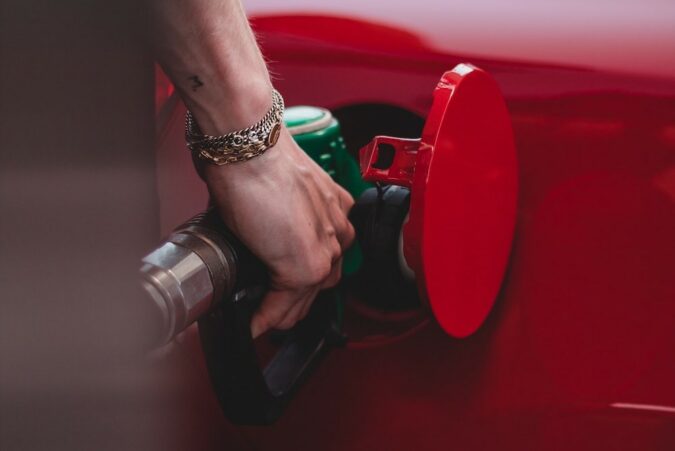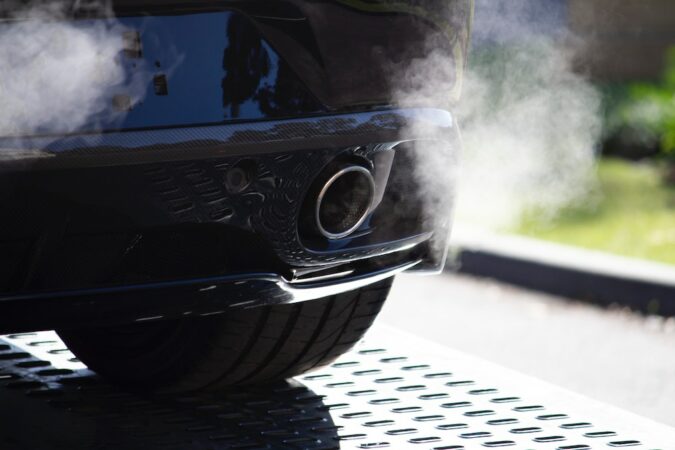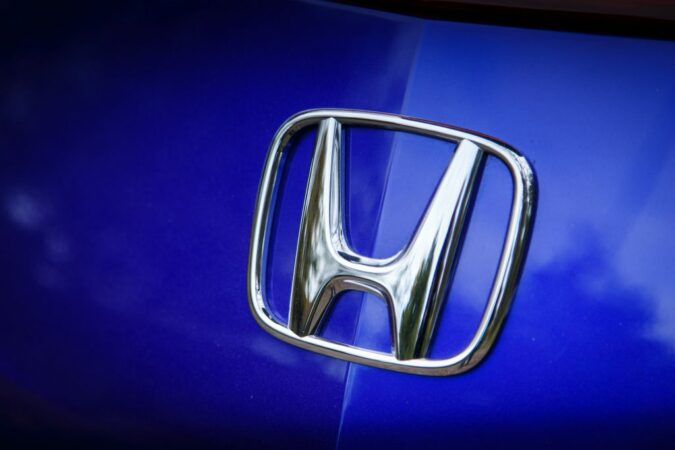Driving with a warning light flashing on the dashboard is not particularly enjoyable. Contrary to other warning lights, the “check fuel cap” light is modest. However, It’s crucial to comprehend the significance of each warning light that the dashboard may flash when you’re driving or owning a car. So what does check fuel cap mean? Read along to find out.
Fortunately, the check fuel cap light is less frightening than you think. There’s no reason to be alarmed or in a panic. But fuel cap warnings are still important, and you shouldn’t ignore them. The fuel cap may not have been securely fastened to the fuel tank filler tube, it may be missing, or it may be broken, according to this check fuel cap warning.
If you check and the gasoline cap appears to be in good condition, have a mechanic look at the problem so he/she can identify it. Continue reading to discover more about the meaning of the check fuel cap indicator light and how to resolve this problem.
- Fuel Cap Functions
- Check Fuel Cap Causes
- Loose Gas Cap Symptoms
- Check Engine Light
- Capless Gas Tank Problems
- Conclusion
- FAQs
Check Fuel Cap
Your first thought will be to check the fuel cap if you get the “Check Fuel Cap” alert. What if, however, you found that the gasoline cap is securely fastened and in place? Are there any issues with your car?
It is only normal to feel anxious when your car’s check fuel cap light comes on. You could worry that you won’t be able to get home safely if this is something that has never happened to you before. However, some of the causes of this issue are rather simple to resolve.
To fix a check fuel cap light on your automobile, understand the connection between your gas cap and the light. There are numerous causes for your car’s check engine light to come on, including-
- Loose or tight gas cap
- Cracked or faulty gas cap
- Issues with the EVAP System
- Catalytic converter issues
You should feel comforted now that you are aware of the common reasons why a check engine light comes on. The next time your check engine light illuminates, immediately pull your automobile over to the shoulder when it is safe to do so.
If the check engine light is on and your car is smoking or making an odd noise, there may be an issue with the engine. You should arrange for a tow to repair and stop driving in this vehicle.
But what if the light turns on but your car isn’t smoking or making any strange noises? You can rapidly check the gas cap even if you have no knowledge of auto repair. Without going to your neighborhood garage, you might be able to resolve the issue yourself, saving both time and money. But for that let’s first understand the functions and properties of a fuel cap.
What Does Check Fuel Cap Mean: Functions Of A Fuel Cap
1. Ensuring A Vacuum Pressure Seal
Fuel is pressurized so that it can go through the fuel system. When the fuel cap is firmly fastened to the fuel tank, a vacuum seal is made, allowing pressurized fuel to be achieved. The fuel pump can gather gasoline in the system and run smoothly thanks to this pressurization.
2. Sealing Pollutants And Fumes Inside The Fuel Tank
For the evaporative emissions (EVAP) system to operate correctly, the gasoline tank must be sealed. Drivers and passengers are safeguarded from hazardous fumes produced within the gasoline tank by the evaporative emissions (EVAP) system. Pollutants that might otherwise be released into the environment are also prevented from entering the atmosphere thanks to the evaporative emissions (EVAP) system.
3. Preventing Fuel Contamination And Protects The Fuel Tank
The fuel filter, fuel lines, fuel injectors, or even the fuel pump itself may become clogged if foreign substances enter the fuel tank. This will ultimately make the car’s engine unusable. Moisture within the gasoline tank may result in corrosion, rust, or sludge. The fuel cap in place ensures a tight seal and prevents this from happening.
What Does Check Fuel Cap Mean: Causes Of A Check Fuel Cap Warning
The fuel cap may not have been correctly attached to the gasoline tank filler tube, it may be missing from the filler tube, or it may be damaged in some other manner if the check fuel cap light illuminates on the dashboard.
These problems will make it impossible for the fuel cap to fulfill one or more of its many essential functions. The following are some potential reasons why the check fuel cap light might illuminate:
1. Missing Fuel Cap
If the fuel cap is not on the fuel tank at all, it causes multiple issues. The gasoline cannot be pressurized and the fuel and fuel tank cannot be protected against contamination. Also, the evaporative emissions (EVAP) system cannot protect passengers or the environment from the dangerous pollutants that are discharged from the fuel tank.
Lack of a gasoline lid on the fuel tank can result in various damage to the engine. If the fuel cap is missing, the check fuel cap light will come on.
2. Loose Fuel Cap
Holding vacuum pressure is one of the goals of the fuel cap. Vacuum pressure will be lost and leaks in the gasoline tank if the fuel cap is not firmly fastened to the tank. The check fuel cap light will come on if there is inappropriate vacuum pressure or vacuum leaks.
Rubber seals on fuel caps that are damaged puts the tank system of the vehicle at risk. The gasoline does not receive the crucial pressure. As a result, the vehicle’s performance also becomes unreliable.
If the gasoline cap is not tightened, the alert will remain on. After making sure everything is in order if the gasoline cap light is still on, something else is obviously amiss. It’s time to start looking for a mechanic.
3. Tight Fuel Cap
The fuel cap itself may be harmed if it is screwed too firmly onto the fuel tank. Vacuum pressure is produced by the rubber seal on the gasoline cap. However, if the fuel cap is fastened too tightly, the rubber seal may roll over and cause vacuum leaks. The check fuel cap light will come on if the fuel cap is too tight.
4. Damaged Fuel Cap
A gasket and a rubber seal are located on the underside of the fuel cap. Vacuum leaks may result from the rubber seal rolling over, being removed, or having a cracked gasket. If the fuel cap is damaged in any manner, the check fuel cap light will come on.
Your gas tank receives the gas through the fuel tank filling tube. The filler neck may be the issue if the check fuel cap warning appears after making sure the cap is in good condition.
Even if the gasoline caps are securely fastened, cracks in the fuel filler neck won’t cause the light to go off. Because of the fuel tank’s leakage of fumes through the crack, the check fuel cap notification will continue to appear.
To stop further harm, the fuel tank filler tube might need to be replaced. Since a mechanic is required, this form of repair is unfortunately a little expensive. Both the parts and the labor will have to be covered.
5. Faulty Catalytic Converter
The catalytic converter is located close to the exhaust exit below your car. This component transforms dangerous gases like carbon monoxide and nitrogen dioxide into carbon dioxide or water vapor.
When inhaled, these harmful gases frequently cause headaches and nausea. If exposure is extended, death is the worst-case scenario. A faulty converter may result in a fuel cap alert (for more insight, check out our guide on damage to catalytic converter).
Instead of releasing harmful gases into the air, a converter that is malfunctioning may leak hazardous fumes. If this is the case, you will notice a decrease in gas mileage. Reduced gas mileage is a sign that a mechanic is needed to fix the fuel cap warning.
Loose Gas Cap Symptoms
1. Smell Of Fuel Vapours
Gas is securely stored in a gasoline tank with a fuel cap to stop leakage. It is not always necessary to use a gas cap to prevent the gas from pouring out of the fuel tank. Fuel tanks in automobiles feature safe gas flow.
Fume leaks, however, are not a feature of the design. Inhaled fuel vapors are dangerous to health. This situation may occur if your fuel cap is damaged. Dizziness and headaches may result from it.
High gas fume exposure, however, can result in fainting or, in the worst-case scenario, death. If this occurs, opening the windows can be helpful. Until it can be fixed, you can decrease the stench.
2. Low Fuel Economy
You can experience decreased fuel efficiency if your gas cap is loose or missing, as the evaporative emission control system may become harmed. This might occur if unburned fuel from your car’s engine escapes through the filler neck and into the atmosphere, which would have a negative impact on the environment.
Through a process known as “cold running,” a loose or missing gas cap can potentially let debris and moisture into your car’s fuel system. When this occurs, the vehicle may experience decreased power and performance issues. As if that weren’t bad enough, the evaporative emission control system may operate less effectively due to a hot air leak brought on by a loose gas cap.
This could cause more of your car’s expensive components to be damaged and exposed to high temperatures, in addition to wasting fuel.
3. Engine Misfires
Cold running can let impurities into the gasoline tank of your car. Engine misfires may eventually result from the filth and moisture that result from the evaporation of the gasoline when this happens. If there is too much moisture in the ignition system of your car, you can encounter rough idling or stalling when you start it.
Loose Gas Cap Check Engine Light
Your gasoline cap could be the root of your check engine light. Your car’s evaporative emissions system includes your fuel cap. The fuel can evaporate if your gas cap isn’t functioning properly, which can lead to a leak in the system. The check engine light can come on as a result of this issue.
The gasoline cap may appear like a minor problem that won’t have a significant impact on your car’s performance. However, if that problem causes the check engine light to come on, your vehicle won’t pass the emissions test. Replace your gasoline cap right away if you think it’s the problem.
If the fuel cap issue still persists, it’s time to take it to repair. Vehicles require expert care since they are sophisticated. If the issue is left unattended, your car may not get good fuel efficiency. Your gasoline tank is damaged by the air that it is exposed to when there is a leak or breach. If you are experiencing this issue, be prepared for a pricey fix.
Gas Cap Test
Get out of the car and if necessary, open the gas cap door. Bring a flashlight if it is dark out. You might require additional light to inspect the gas cap for cracks.
Examine the gas cap. Are there any rips, chips, or cracks in it? If so, a straightforward gas cap replacement could be able to fix the issue. It is advisable to look for any tears or cracks that could result in a vapor leak in the seal that is located between the gas cap and the filler tube.
If the check engine light was brought on by a loose gas cap, it should turn off within a few minutes of driving. After you’ve experienced the check engine light, pay attention to the dashboard. Your gas cap is too loose if you notice that the light continues turning on and then turns off when you tighten it.
Ordering a replacement gas cap is easy if you discovered that yours is broken or loose. To achieve a snug fit, you must first check sure the gas cap is appropriate for the make and model of your car.
Check Fuel Cap Honda
There are various reasons for the Check Fuel Cap notification to appear in a Honda, some of which are more frequent than others. The gas cap is typically the cause of this issue, though there may be other problems as well. After the issue is repaired, the message won’t go away until the car has been driven for a bit.
Honda Check Fuel Cap Reset
Try that first because frequently the fuel cap message is brought on by the fuel cap not being properly closed. Your Honda’s check fuel cap warning can be reset as follows:
- Turn the engine off.
- Open the fuel door.
- Tighten the cap.
- Restart your vehicle.
But occasionally, the system can take some time to reset, and the light might not go off for a while. If the check fuel cap message is still displayed, there may be a more serious problem that has to be carefully diagnosed by a professional. You should get in touch with a mechanic so that they can scan your system and fix the issue.
Check Fuel Cap Honda Accord
A loose or poorly screwed gas cap is typically the culprit behind a gas cap light. After the cap is tightly fastened, the light usually goes out. The cap, however, can be defective in some circumstances. As the cap ages, a tiny air leak could form, allowing fumes to flow and turning on the gas cap warning light on the instrument panel.
The gas cap can be checked to make sure it is tightly fastened, but if the light does not go out, the cap will probably need to be replaced. The check-engine warning light on the Honda Accord may ultimately turn on, according to the Honda Accord user manual.
Also, beware of imitation Honda gas caps, as they occasionally fail to function. The non-genuine gas caps occasionally function and are less expensive, but they may not seat properly and cause problems. To rule out the cap as a potential issue, it is essential to purchase genuine Honda caps.
Check Fuel Cap Honda Civic
One of the Honda Civic’s most frequent warning messages is “Check Fuel Cap.” It is clear from this notice that you should check the fuel cap to make sure it is on and fastened. Even when the fuel cap looks to be on and secured, it will frequently still manifest.
Your Civic will continue to function flawlessly. The only thing you might detect is a faint fuel odor (particularly if your tank is full). The check fuel cap notification will be accurate if you can smell fuel. The most likely solution would be to replace the gasoline cap if it was tight.
Check Fuel Fill Inlet F150
The pressure seal between the gas cap and the tank is malfunctioning if your F-150’s “check engine” light has come on and a diagnostic code has linked the problem to a “check fuel fill inlet” message.
There are numerous possible causes of this problem. But the most frequent one is a gas cap that is either loose or has not been completely closed. This is a likely reason if your check engine light is turned on after you filled up your tank.
Fortunately, there is an easy fix for this. The gas cap needs to be simply unscrewed and then screwed back on. It can take a while for the error message to stop appearing or it might disappear right away. If it doesn’t work, you might have a problem with dirt or debris that’s obstructing the seal. Cleaning the area around the seal will help you resolve this.
Still, getting error messages? Your fuel fill inlet valve may actually be leaking. These seals may need to be changed if they degrade over time. If this is the case, the gas cap itself will likely have debris and damage. Even if your gasoline fill inlet valve needs to be changed, your neighborhood Ford service center can do this reasonably quick and inexpensive repair.
Capless Gas Tank Problems
With the 2009 Ford Explorer (fun fact, go check out our guide on the 2013 Ford Explorer catalytic converter), Ford pioneered the practice of capless fuel fillers and gas tanks. Fast forward to the present day, and many automakers, including Fiat Chrysler, Honda, General Motors, and others, use capless fuel fillers on their vehicles. With the help of this technology, you can fill your tank without having to remove the gas cap each time.
Simply enter the gas nozzle from the pump, and the filler will be immediately inserted. Never before has filling up your gas tank been so easy. Capless gas tanks, however, also offer significant disadvantages. If the filler neck flap fails to properly seal owing to filth or dust, it results in a check engine light.
Many car owners have reported that they are having issues with their capless gas tanks in their reports. While it offers a somewhat convenient manner to fill your gas tanks, it is not flawlessly constructed and has some drawbacks as well. If there is dirt or debris buildup at the capless gasoline filler region, the check engine light will come on.
The buildups may prevent the flap in the filler neck from fully closing. Numerous car owners have stated that they too have had similar issues. Some people even had their automobiles inspected for potential engine issues, but the capless gas tank was the real issue.
The dirt buildups can also cause the trouble code P0457 or an evaporative emission control system leak in addition to turning on the capless gas tank check engine light. Finding the issue only to learn that the check engine light is being caused by a capless gas tank can be annoying.
What Does Check Fuel Cap Mean: Final Conclusion
The gasoline cap on a car serves a number of purposes that keep an automobile functioning properly in addition to keeping the fuel tank secure. The vacuum pressure seal in the car’s fuel system is maintained by the fuel cap, allowing the pump to distribute gasoline to the combustion system as intended.
However, it is still safe to drive with the check fuel cap indication The gas won’t leak out thanks to the flapper valve that was built inside the tank even if the fuel cap is missing and you fill the tank with gas all the way to the top.
However, harmful fumes and smells can enter your car. Without the gasoline cap, there is a considerable risk of breathing in these harmful gases. It won’t cost you much to fix the vehicle if you can replace the missing gasoline cap on your own. However, if the issue is severe and persistent, it is wise to call for a mechanic’s help.
FAQs On What Does Check Fuel Cap Mean
Can You Drive Without Gas Cap
It is actually safe to drive without a gas cap. It doesn’t harm the engine nor does it allow fuel to leak out of your vehicle. This is so that gasoline leaks are prevented typically by the flapper valves in automobiles. However, the gas cap serves as a barrier against mud or debris fragments that could harm the engine if it were left open.
What Problems Can A Loose Gas Cap Cause
In addition to letting dirt and grime in, a loose gas cap may also let fuel vapors escape. These vapors have the potential to cause an emissions system malfunction. Thus in turn would turn on the check engine light. The injectors could also become contaminated by dirt that leaks into the gas tank.
How To Test A Gas Cap For Leaks
Check a gas cap for leaks by turning it on until the proper tension is reached, then watch to see if the cap spins freely as opposed to stopping or clicking. Gasoline odor, discoloration around the gas tank intake, and a dashboard warning light are all indications that a gas cap is leaking.
Can A Loose Gas Cap Cause Check Engine Light
Your check engine light could turn on for a reason as simple as forgetting to tighten the gas cap. This is due to the gas cap’s ability to prevent fuel tank vapor leakage. Gas cap issues can further significantly worsen emissions and limit fuel economy.
How To Tell If A Gas Cap Is Bad
A gas cap that won’t tighten all the way or one that is loose will be the most noticeable sign of a bad gas cap. At first glance, this might not appear important, but the entire fuel system could be exposed to dust and dirt if there isn’t an air-tight seal.
How Long Before Check Engine Light Goes Off After Gas Cap
If the check engine light was brought on by a loose gas cap, it should turn off after a few minutes of driving. After you’ve experienced the check engine light, pay attention to the dashboard. Your gas cap is too loose if you notice that the light continues turning on and then turning off when you tighten it.





